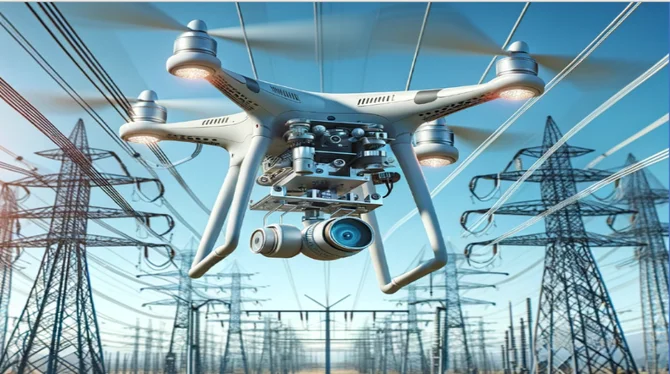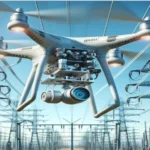Professional drones, also known as unmanned aerial vehicles (UAVs), have become increasingly popular in various industries due to their versatility and capabilities. These drones are equipped with advanced technology, including high-resolution cameras, sensors, and GPS systems, allowing them to perform a wide range of tasks with precision and efficiency. Professional drones are used for aerial photography, surveying, mapping, inspection, monitoring, and delivery, among other applications. They have revolutionized the way businesses operate and have opened up new opportunities for innovation and growth.
The use of professional drones has expanded rapidly in recent years, as advancements in technology have made them more accessible and affordable. These drones are now being used in industries such as agriculture, construction, energy, infrastructure, mining, transportation, and public safety. With their ability to capture high-quality images and data from the air, professional drones have proven to be invaluable tools for improving productivity, safety, and decision-making in various sectors. As the demand for professional drones continues to grow, it is important to understand their applications, advantages, challenges, and regulatory considerations in order to harness their full potential.
Applications of Professional Drones in Various Industries
Professional drones have a wide range of applications across different industries, making them indispensable tools for businesses seeking to improve efficiency and productivity. In agriculture, drones are used for crop monitoring, field mapping, and precision agriculture. They can capture aerial images and collect data on crop health, soil conditions, and irrigation needs, allowing farmers to make informed decisions and optimize their operations. In construction, drones are used for site surveying, progress monitoring, and 3D mapping. They can provide real-time updates on construction projects, identify potential safety hazards, and improve project management.
In the energy sector, drones are used for inspecting power lines, wind turbines, and solar panels. They can capture detailed images of infrastructure and equipment, identify defects or damage, and reduce the need for manual inspections in hazardous environments. In infrastructure and transportation, drones are used for asset management, maintenance inspections, and traffic monitoring. They can help identify maintenance needs, assess the condition of roads and bridges, and improve traffic flow. In public safety, drones are used for search and rescue missions, disaster response, and surveillance. They can provide aerial support in emergency situations, gather critical information from hard-to-reach areas, and enhance situational awareness for first responders.
Advantages of Using Professional Drones
The use of professional drones offers numerous advantages for businesses across various industries. One of the key benefits of using drones is their ability to access hard-to-reach or hazardous areas. Drones can fly into confined spaces, over rugged terrain, or above dangerous environments to capture valuable data without putting human workers at risk. This capability is particularly valuable in industries such as construction, energy, infrastructure, and public safety where access to remote or dangerous locations is essential.
Another advantage of using professional drones is their ability to capture high-resolution images and data from the air. Drones are equipped with advanced cameras and sensors that can capture detailed images and collect precise measurements with accuracy. This capability is invaluable for tasks such as aerial photography, surveying, mapping, inspection, and monitoring. Drones can provide real-time updates on project progress, identify potential issues or defects, and improve decision-making based on accurate data.
Furthermore, the use of professional drones can significantly reduce costs and improve efficiency in various operations. Drones can perform tasks more quickly and with less manpower compared to traditional methods. They can cover large areas in a fraction of the time it would take for ground-based surveys or inspections. This efficiency can lead to cost savings in terms of labor, equipment, and resources. Additionally, the use of drones can minimize downtime by providing timely information on maintenance needs or potential issues before they escalate.
Challenges and Limitations of Professional Drones
While professional drones offer numerous advantages, there are also challenges and limitations that need to be addressed in order to maximize their potential. One of the main challenges is the complexity of operating drones in different environments and conditions. Pilots need to have the skills and knowledge to navigate drones safely and effectively, especially in challenging weather conditions or crowded airspace. Additionally, there are limitations in terms of battery life and flight range that can impact the capabilities of drones for certain applications.
Another challenge is the potential for privacy and security concerns related to the use of drones. As drones become more prevalent in various industries, there is a need to establish clear guidelines and regulations to protect privacy rights and prevent misuse of drone technology. This includes addressing issues such as unauthorized surveillance, data protection, and the potential for drone-related incidents or accidents.
Furthermore, there are technical limitations related to the payload capacity and capabilities of drones for specific tasks. While drones have advanced significantly in terms of their payload capacity and sensor technology, there are still limitations in terms of the size and weight of equipment that can be carried by drones. This can impact their suitability for certain applications that require heavy or specialized equipment.
Regulatory and Legal Considerations for Professional Drones
The use of professional drones is subject to regulatory and legal considerations that vary by country and industry. In many countries, there are specific regulations governing the operation of drones for commercial purposes. These regulations may include requirements for pilot certification, registration of drones, flight restrictions in certain areas, and compliance with safety standards. It is important for businesses to be aware of these regulations and ensure that they are in compliance with the law when using drones for professional purposes.
In addition to regulatory considerations, there are also legal implications related to the use of drones in terms of liability, insurance, and privacy rights. Businesses using drones need to consider the potential risks associated with drone operations and take appropriate measures to mitigate these risks. This may include obtaining liability insurance coverage for drone operations and implementing policies to protect privacy rights and data security.
As the use of professional drones continues to expand, there is a growing need for clear guidelines and standards to ensure safe and responsible use of drone technology. This includes collaboration between industry stakeholders, government agencies, and regulatory bodies to develop best practices for drone operations and address emerging issues related to privacy, security, and airspace management.
Future Outlook for Professional Drones
The future outlook for professional drones is promising as advancements in technology continue to enhance their capabilities and expand their applications. The use of artificial intelligence (AI) and machine learning is expected to further improve the autonomy and intelligence of drones, allowing them to perform more complex tasks with minimal human intervention. This includes capabilities such as autonomous flight planning, obstacle avoidance, and real-time decision-making based on sensor data.
Furthermore, advancements in sensor technology are expected to improve the accuracy and precision of data collected by drones for various applications. This includes advancements in imaging sensors, LiDAR technology, thermal imaging, multispectral imaging, and other specialized sensors that can provide valuable insights for agriculture, construction, energy, infrastructure, and other industries.
In addition to technological advancements, the future outlook for professional drones will also be influenced by regulatory developments that aim to address safety concerns and promote responsible use of drone technology. This includes efforts to establish clear guidelines for drone operations in urban areas, airspace integration for commercial drones, remote identification systems for drones, and standards for drone traffic management.
Overall, the future outlook for professional drones is expected to be characterized by continued growth in their adoption across various industries as businesses recognize the value of drone technology for improving efficiency, safety, and decision-making.
The Impact of Professional Drones on Industries
In conclusion, professional drones have had a significant impact on various industries by providing valuable capabilities for aerial photography, surveying, mapping, inspection, monitoring, and delivery. The versatility and efficiency of professional drones have revolutionized the way businesses operate by improving productivity, safety, and decision-making across different sectors.
While professional drones offer numerous advantages such as access to hard-to-reach areas, high-resolution imaging capabilities, cost savings through improved efficiency; there are also challenges related to operating complexity, privacy concerns; technical limitations; regulatory considerations; legal implications; future outlook; technological advancements; regulatory developments; overall impact on industries.
As the use of professional drones continues to expand; it is important for businesses to understand their applications; advantages; challenges; regulatory considerations; future outlook; overall impact on industries; in order to harness their full potential while addressing emerging issues related to privacy; security; airspace management; safety concerns; responsible use of drone technology.
In conclusion; professional drones have had a significant impact on various industries by providing valuable capabilities for aerial photography; surveying; mapping; inspection; monitoring; delivery; improving productivity; safety; decision-making across different sectors; while also presenting challenges related to operating complexity; privacy concerns; technical limitations; regulatory considerations; legal implications; future outlook; technological advancements; regulatory developments; overall impact on industries. As businesses continue to adopt professional drones; it is important to address these challenges while maximizing the potential benefits offered by drone technology.




